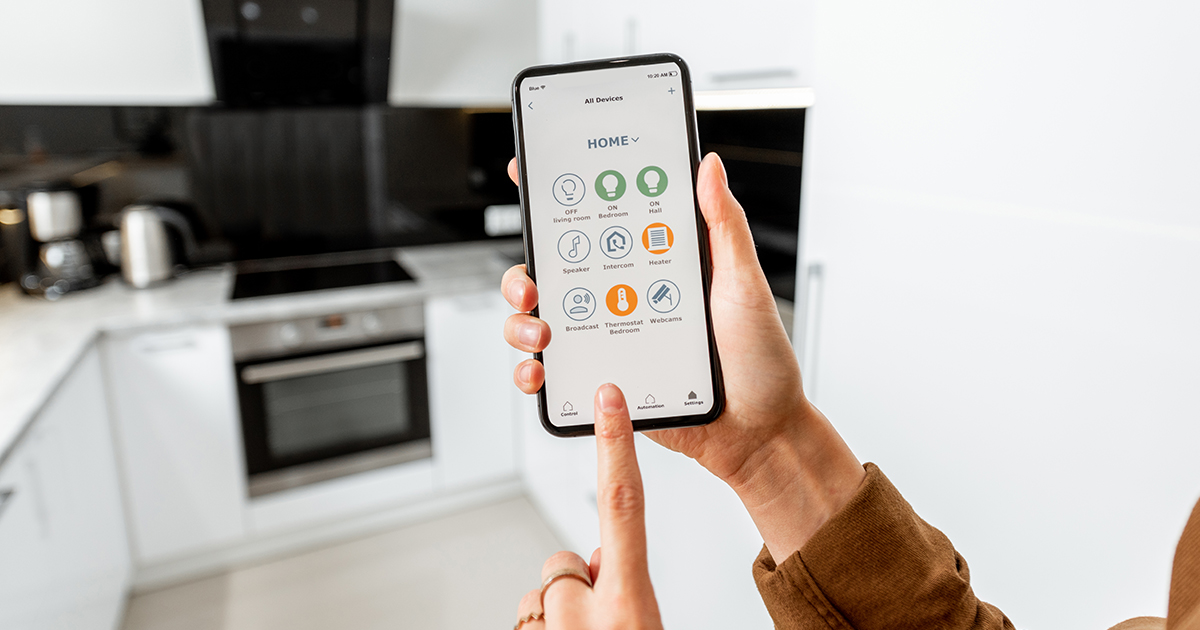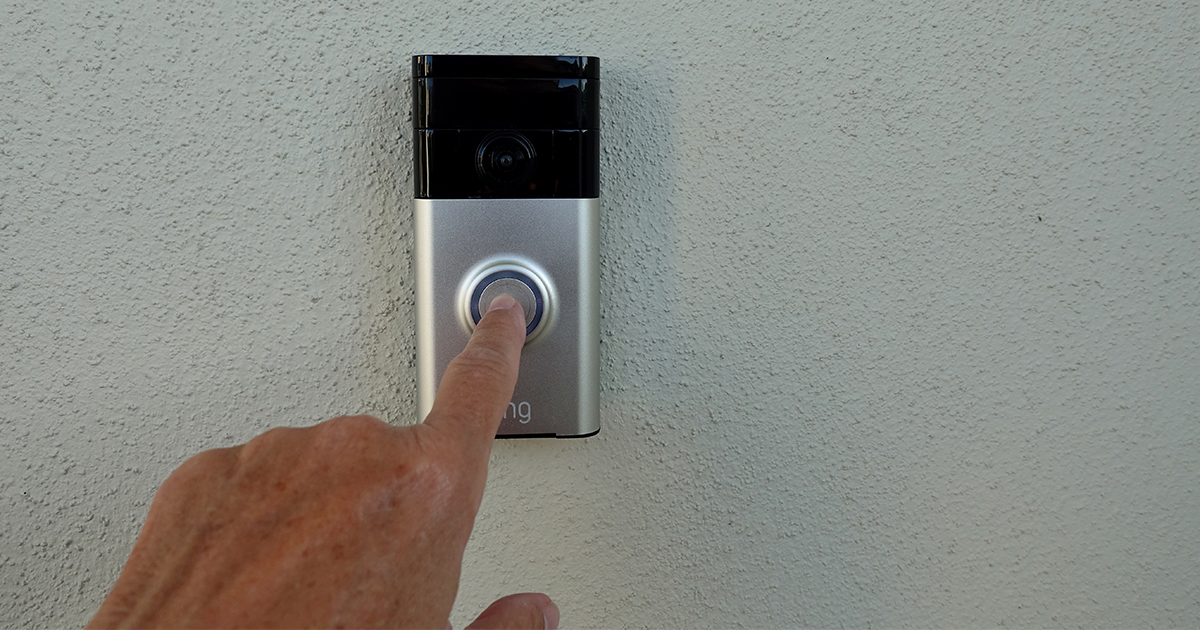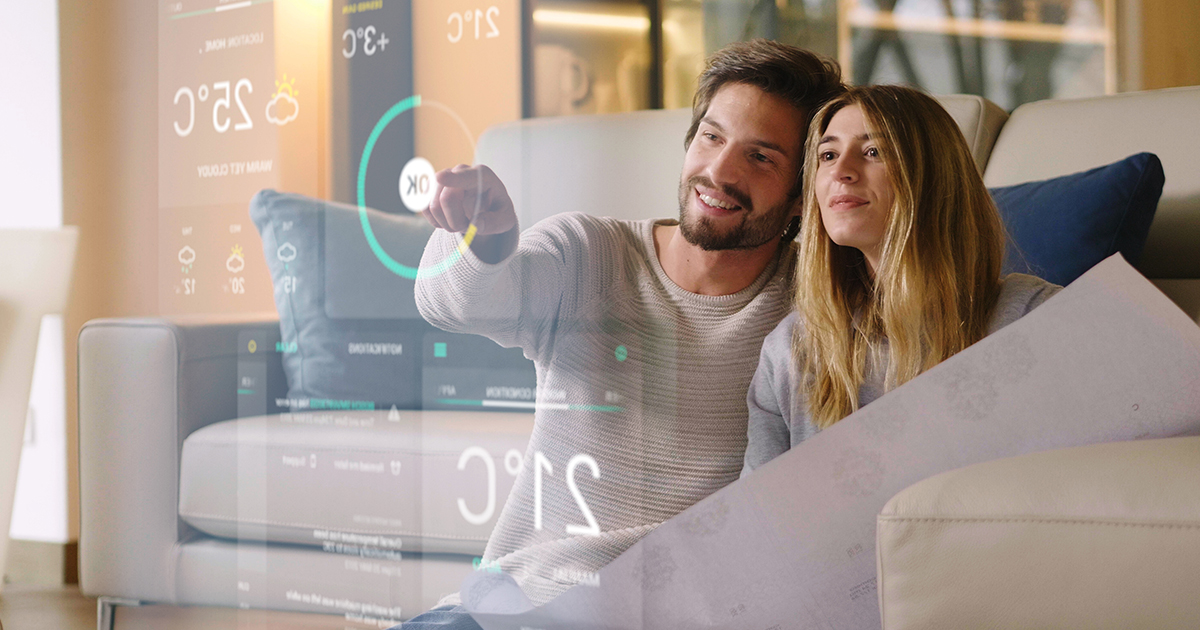Smart home devices are now commonplace in Irish homes, with the rapid growth of smart TVs, voice assistants, smart lights, and speakers.
We dive into this trend of home automation and give you an overview of the best ways you can transform your home into a smart home!
1) Smart Home Control
Before we look at individual smart devices, it's worth discussing how a smart home is controlled. There are thousands of smart home device manufacturers, from Philips for smart lights, Hive for smart thermostats to Ring for video doorbells. The impact of so many manufacturers is that each typically has their own smartphone app to control their devices. In some cases, you will need to purchase a manufacturer-specific smart hub, for their products to work. This can be frustrating for the homeowner, who needs to remember which app controls which device.
One app to rule them all!
The holy grail of a smart home is to have a single smart display and smartphone app that controls all. For those engaging a smart home automation integrator in Ireland, they will typically use Control4 as the central hub that controls everything. For the home automation enthusiasts, Samsung SmartThings and Home Assistant are good platforms worth considering. Depending on your choice of Voice Assistant; Alexa, Google Home, and Apple Homekit all provide a way to control all compatible devices centrally. For everyone else, you’ll just have to get used to having different apps for all your smart home tech!
Scenes
The beauty of a fully connected smart home is in its “scenes”. There are lots of independent devices that work well in isolation however the trick is to get these devices working together. An example of a scene is to ask Alexa to “Start Movie Night”. Alexa can then trigger the sitting room lights to come down, automatically close the curtain, turn on the TV or projector and switch to Netflix. Another example is a night-time routine. At the press of a button, all the downstairs lights and TV automatically switch off, while the alarm system partially arms. This is where home automation enthusiasts really get creative!
2. Voice Assistant
With smart home technology, you can control everything through voice commands. The accuracy of these voice assistants is continually improving as the technology evolves. Alexa, Google Assistant, and Siri are the most popular assistants available. Siri is a popular choice for homes where there is already a large amount of Apple tech. When setting out on your smart home adventure, it is best to choose and stick with one voice assistant. The reason for this is when you are selecting smart devices, you will need to ensure they are compatible with this assistant.
3. Smart Speakers & Smart Displays
Smart speakers are incredibly popular and are very competitively priced. With integrated microphones, smart speakers listen to your voice commands and respond as needed. They are a great way to listen to music, audiobooks, or radio stations. You can control your home devices, set timers when cooking dinner, or ask questions that your voice assistant can answer. The Amazon Echo Speaker is the most popular, with Alexa built-in. Google offers the Google Nest Speaker, with Google Assistant at its core. The Apple HomePod Speaker allows you to interact with Siri, play music, or control your home tech.If you have a number of smart speakers in your home, you can use them as an intercom system to “drop-in” to other rooms. Great for when you need to call the kids for dinner! If you are looking for multi-room audio, Sonos and Bose also have some high-end speakers, with Alexa and Google Assistant voice control. There are also smart displays available, which gives you everything a smart speaker provides along with a tablet-like screen to control your home devices, make video calls, view recipes, or watch videos.


4. Upgrade your Lighting
Home lighting design has a major influence on the atmosphere of a room and is a crucial part of any smart home project. Thanks to the evolution of smart lighting, high-end lighting effects can now be achieved on a budget. For major home renovations or one-off builds, there are numerous Irish lighting design contractors who specialise in this area. For everyone else, there are hundreds of options of smart bulbs, strip lights, and LED panels if you are looking to change the mood of a space. While smart bulbs are a little more expensive than traditional ones, there are significant long-term cost savings in replacing your halogen bulbs with LED ones.
If you are happy with your existing lighting fixtures, you can replace your light switches with smart switches that can work for dimmers and multi-gang switches. Smart plugs and sockets can be used to voice control lamps or to tie everything together into a scene. There is also a wide range of smart lighting accessories, such as smart buttons, scene selectors, and remote controls. Occupancy sensors are also a great option to automatically bring up the lights when going to the bathroom at night!
Philips Hue, Lifx, and Hive have some great products in this area.
5. Smart Central Heating Controls
Smart thermostats have changed the way we control our central heating systems. Gone are the days of coming home to a cold house on a wintery day. With smart scheduling and remote control, you can now prime your heating system to have your home at the right temperature when you return. Compared to older heating programmers, smart thermostats automatically turn off when you leave so you never spend money heating an empty home. Many Irish homes do not have thermostats installed, so by upgrading to a smart thermostat, you will be able to maintain the temperature at a comfortable level throughout the day.
Smart thermostats also provide reporting and insights so you have a bird's eye view on how much energy you are consuming, helping you save energy and money. It’s also possible to achieve heating zones with smart radiator valves. These devices communicate with your central thermostat and turn on and off radiators in each room to maintain the correct temperature. Hive, Nest, and Honeywell are all major players in this space.
6. Security
The home security landscape has transformed in the last ten years, thanks to smart home technology. Most home security providers now utilise wireless technology for alarm systems including door and window contacts, alarm keypads, PIR motion detectors, and panic alarms. These devices are typically connected to the internet so you can control your alarm system from your smartphone and get notified if the siren is sounding. Homeowners can now buy indoor wireless security cameras which are useful for baby monitoring or keeping tabs on kids or pets! Again camera feeds are accessed through a smartphone app.
Battery-operated, wireless outdoor security cameras can also be installed, which are simple to set up and monitor. These bullet, turret, or PTZ cameras are a great deterrent for would-be burglars. While these wireless cameras are an easy way to improve home security, they are still not as reliable as wired cameras connected to a central network video recorder. Video doorbell cameras have become the latest trend, allowing you to answer the door even if you are not there. Alerts and video feeds come through to your phone allowing two-way audio to whoever is knocking. Even the front door lock is evolving with smart door locks now keyless, allowing for smartphone control, PIN numbers, and even fingerprint biometrics! Some of the brands to look out for on the security front include Ring, Arlo, Yale, Nest, Kasa, and Swann.


7. Smart Kitchens
The kitchen is the latest area of the home to be transformed by technology. We mentioned above how voice assistants and smart speakers can help in setting timers while cooking up a storm! Smart displays can replace all of those cookbooks by having a single recipe app on screen. Connected refrigerators are becoming popular with in-built displays, shopping lists, expiry date tracker, and integrated cameras, so you can check what you need from the supermarket aisle! You can upgrade your hob, with an instantly warm induction hob, so you can start cooking immediately. Instant hot water taps are also popular and can speed up your time in the kitchen! Wireless temperature probes now save you the hassle of checking if that roast is cooked! There are even automatic stirrers so you can put your feet up, instead of stirring that pot! What smart kitchen is complete without an app-controlled indoor herb garden, with LED lights that mimic the sun cycle! No better way to finish that dish with some fresh herbs!
8. Smart Living
With the latest technology, you can now delegate part of your daily routine to smart devices! With smart curtains and blinds, you don’t need to touch them as they automatically open in the morning and close in the evening! These are great for hard to reach windows, or to give the illusion you are at home, when away. No more vacuuming the floors, thanks to the latest robot vacuums! With their inbuilt navigation system, they work their way around your home, vacuuming as they go. There are also robot mops and even robot window cleaners! For households with pets, there’s a wide range of smart dog doors and microchip cat flaps which will save you the hassle of letting them in and out every hour!
9. Safety
Smart home technology can increase the safety of those in the home and act as an early warning system. Smart smoke alarms, heat alarms, and carbon monoxide detectors are all interconnected so if one rings, they all ring. You also get notified via your smartphone app and you can trigger a strobe light, in case there are those in the home hard of hearing. Water leak detectors are cheap devices that can save you a fortune, in case of flooding in the home. Like above, these devices can emit a siren while also notifying you via your smartphone. Automatic water shut off valves can be installed on the mains feed into your home. These devices monitor the flow of water through the pipe and can detect leaks up to one drip per minute. In case of a leak, they automatically shut off the water, possibly preventing thousands of euros in damage.


10. Home Entertainment
No smart home is complete without a home cinema! Ultra HD projector, surround sound, recliner seating, smart curtains, cinema-style lighting, and a popcorn maker in the corner! There are lots of home cinema installers in Ireland who specialise in this area. The crucial aspect is to get all these devices working together, at the touch of a button or a simple voice command! If you don’t have the space for a home cinema, then upgrading to a Smart TV with a quality soundbar will greatly improve your viewing experience. You can expand your content horizon with Netflix, Amazon Prime, Disney while using voice commands to control which content appears on screen!
11. Networking
All of this technology will need a rock-solid wireless network to function. The bedrock of a smart home is a fast and reliable broadband connection which may mean you need to upgrade your package or switch provider. The majority of smart home devices are wireless using the Wi-Fi protocol. If you have a large home with Wi-Fi black spots, you may need to upgrade to a “Whole Home” Wi-Fi system which works as a mesh network. This will ensure that all devices around your home have full connectivity. Some people who are worried about privacy and reliance on cloud services choose to design a local smart home. This type of smart home is not connected to the internet and is typically built on the Z-Wave and/or Zigbee protocols. These systems are mesh networks as standard, however you may need range extenders to ensure the signal carries around a large property.



